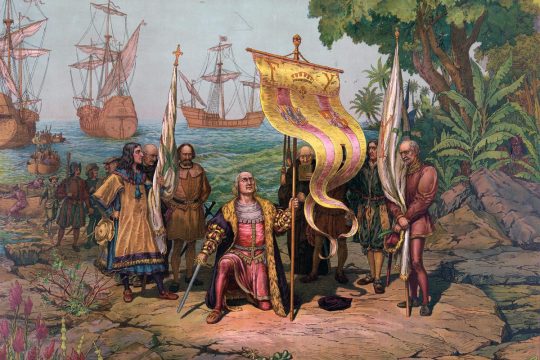Every Serbian knows the clenched fist of Otpor -- it was stencilled on city walls, over government propaganda, and on flags above the mass protests that brought an end to strongman Slobodan Milosevic's rule.
Twenty-five years on, one of Otpor's founders, Srdja Popovic, sees a connection to the "brave, intelligent and highly creative" new generation marching under another emblem -- the bloodied hand -- in some of the largest demonstrations ever witnessed in the Balkan nation.
"Otpor arose as a cry of a generation against wars, economic collapse and growing repression," Popovic told AFP, from the United States, where he teaches at the University of Virginia and Colorado College.
The current protesters, on the streets since November, call for justice and fresh elections over "an attempt to cover up corruption" linked to the collapse of a train station roof in Novi Sad that killed 16 people, he said.
"Both generations realised that it was not enough simply to march, chant slogans and carry banners -- a whole new system of values has to be created."
-'Enemy Number One'-
When hundreds of thousands marched on Serbia's parliament on October 5, 2000, it was "the crown of a generational struggle", the 52-year-old said.
In a country scarred by NATO bombardment and economic collapse, Otpor helped build Belgrade's uprising through years of protest, alongside the political opposition.
"For me, October 5 is above all a symbol -- proof that even the harshest regimes can fall if people unite, organise and persist in non-violent struggle."
Otpor's campaign of peaceful resistance and stunts, often laced with satire and parody, targeted a nationalist government marked by war and sanctions.
When Otpor left a barrel with Milosevic's face plastered on it in central Belgrade, people queued to batter it. Police eventually intervened, seizing the barrel.
"Such actions shattered fear and gave people back a sense of power. And the more the regime got irritated, the more mistakes it made."
But the cost was high.
"Otpor became Milosevic's enemy number one," Popovic said.
More than 2,500 members were detained in 2000 alone, many beaten and tortured.
-'Hope that carried the country' -
After Milosevic's fall, Serbia held its first democratic elections since World War II, electing reformist Prime Minister Zoran Djindjic.
"The period from 2000 to 2003 was perhaps the greatest renaissance of Serbia in its bleak recent history," Popovic said.
For Popovic, those three years pulled Serbia out of an economic and diplomatic abyss, as Belgrade partially confronted war crimes, restored free elections, and gave the people back hope.
"Hope that carried the country until the assassination."
Djindjic was shot dead in 2003. His killers were from a special police unit linked to organised crime and the secret service.
Within five years, Milosevic's party -- and many of his close associates -- would return to power as part of a coalition government. It has been part of every government since.
Today's nationalist government, led by Milosevic-era minister Aleksandar Vucic -- faces a new wave of student demonstrations, some drawing hundreds of thousands.
"Could I have imagined such a scenario in 2000? Honestly, at that time we -- obviously naively -- thought we were opening a long chapter of normality," Popovic said.
-'Fresh air'-
Based on his activist experience, he has penned a book, 'Blueprint for Revolution,' and taught non-violent resistance to pro-democratic movements around the world.
The new Serbian protesters are "a true breath of fresh air".
Though many were born after Milosevic's fall, Popovic sees many similarities with Otpor.
Their symbolic 16 minutes of silence in memory of the Novi Sad victims has, he says, become "as widely recognised as the clenched fist was in the late 1990s".
It took eight years of learning from mistakes for his movement to overthrow Milosevic, and now the future is hard to predict.
But, he said, one thing is clear.
"Eleven months of protests have shattered fear and apathy in the broadest layers of society. And that's not nothing."


